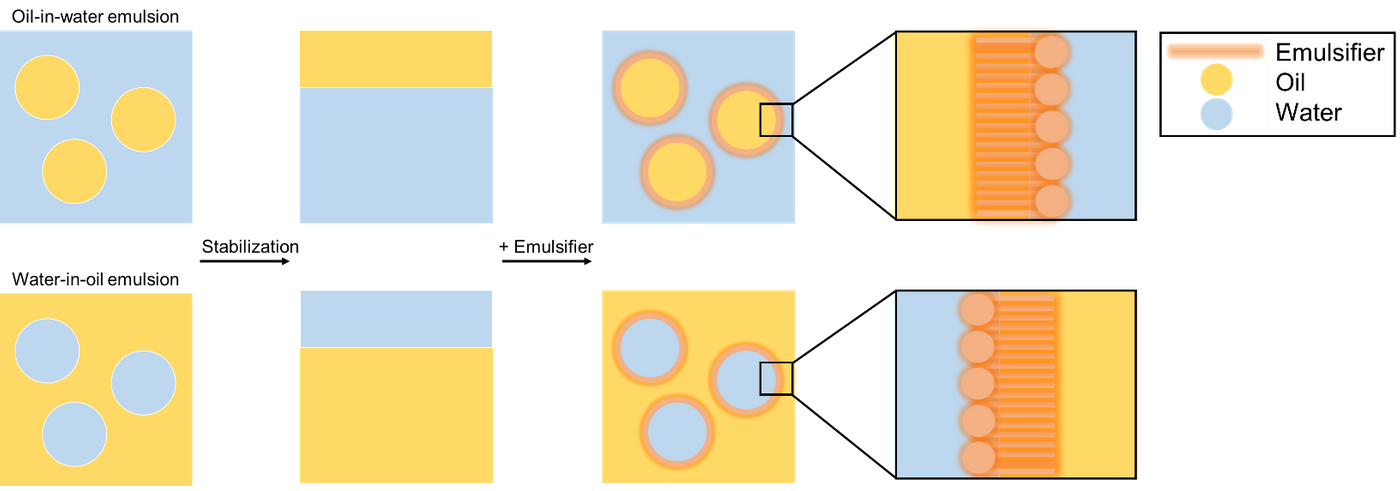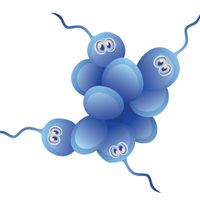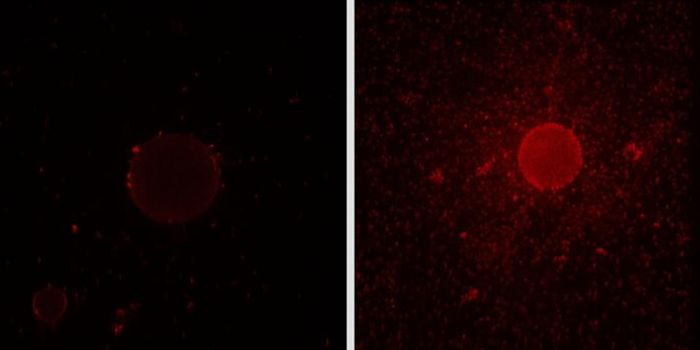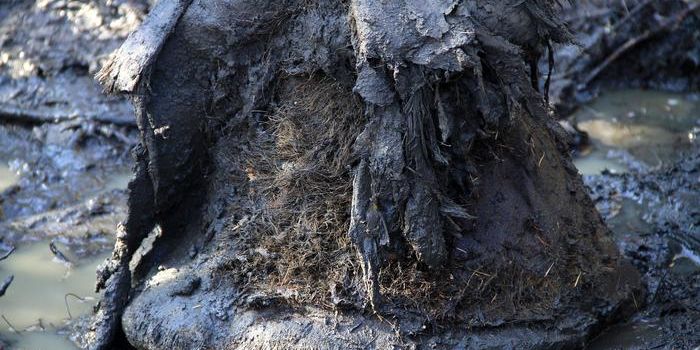The Science of Pesto
In collaboration with UT Health San Antonio, LabRoots is pleased to announce Erica Osta as the winner of the 2020 Graduate School of Biomedical Sciences Writing Contest. Featured below is Osta's winning article, enjoy.
The word pesto comes from the Genovese word pestâ (pestare in Italian) which means “to pound” or “to crush” in reference to the technique used to extract the highly aromatic compounds into the stable mixture of oil- and water-loving compounds found in pesto. This mixture is an emulsion, where two liquids do not dissolve with each other but retain their distinct identities when mixed (Fig. 1). The simplest example is a mixture of oil and water. In an emulsion, one liquid is broken into separate droplets (dispersed phase) suspended in the second liquid (continuous phase) when homogenized. Generally, a direct emulsion consists of oil droplets in water (oil-in-water) and an indirect emulsion consists of water droplets in oil (water-in-oil). [1] Pesto is considered a complex, partial emulsion of water-in-oil but the literature offers limited information about the physicochemical processes of such a historic staple of Italian cuisine. This report briefly proposes the mechanisms that drive the formation of the oil-rich continuous phase, aqueous dispersed phase, and stabilization of the emulsion.
The fundamental components of pesto used in this report were: pine nuts, garlic, Parmigiano-Reggiano, pecorino, Genovese basil leaves, sea salt, and extra virgin olive oil. Table 1 shows the amount (g) of ingredients with the major chemical compounds that contribute to the aroma, flavor, and texture of pesto. First, the toasted pine nuts are ground into a paste. Pine nuts have a high flavor-rich free fatty acid (FA) content, with oleic acid, linoleic acid, and saturated FAs accounting for a total of approximately 98% of total mass, which allows them to form a paste, rather than dry crumbs, when ground. [2] Next, the garlic is thoroughly ground and integrated into the pine nut paste. The characteristic aroma of garlic is accentuated by applying the shearing forces of grinding, compared to slicing which can still preserve some of the microarchitectures of garlic. The microscopic effects of grinding garlic disrupt the cellular integrity, which releases the vacuolar enzyme alliinase and catalyzes the reaction of cytosolic alliin into the sulfur-rich allicin with a byproduct of ammonia, equally contributing to the idiosyncratic flavor and aroma of garlic. [3] As the garlic is crushed, the allicin is released in the resultant garlic oil, which begins to solubilize with the oils from the pine nuts. At this stage of developing pesto, the water-in-oil emulsion (1:6 water-to-oil ratio) consists of a continuous phase with oils from the pine nuts and garlic, rich in aroma and flavor, and a dispersed phase with the aqueous content from the garlic (5.9 g, 59% water by weight). Next, the basil leaves are sliced and gradually incorporated into the mixture along with the sea salt (ionizing agent) and olive oil. As the leaves break by mechanical and ionizing forces, the plant cell wall breaks and plasma membrane disrupts, releasing the organic compounds linalool, 1,8-cineole, estragole, and eugenol, which slowly solubilize into the working oil-rich continuous phase. [4] Linalool, 1,8-cineole, estragole, and eugenol are responsible for the herbal, sweet, and spicy flavors, with a warm woody nuance found in basil. Further, the cellular disruption of the basil leaves also releases a modest amount of water (32.6 g, 81% water by weight) into the mixture, thus progressively maintaining the 1:6 water-to-oil ratio as the remaining of the oil-rich ingredients are added to the pesto emulsion. As the emulsion is mechanically forced to mix, droplets of water (i.e., aqueous dispersed phase) will start to form in the oil (oil-rich continuous phase). In pesto, the mechanical homogenization and high oil content will create a great number of microscopic water droplets. In fact, the water droplets do not coalesce together to form a unit of aqueous dispersed phase separate from the oil-rich phase because of the emulsifiers from the basil leaves (e.g., phospholipids from plasma membrane) and olive oil (e.g., fat crystals from triglycerides). [5-7] Emulsifiers are molecules that adsorb to the surface of freshly formed droplets during homogenization to form a protective layer that prevents the droplets from coalescing. Emulsifiers are amphipathic (possess both water- and oil-loving domains) and thus mediate the stable interaction of the aqueous and oil phases increasing the surface area of the dispersed phase inside of the continuous phase by creating droplets. [1] The more stable the droplets, the more stable the emulsion. On the other hand, emulsions without emulsifiers will “break” into their individual units and arrange horizontally parallel to each other to decrease the surface area of direct interaction. After fully integrating the basil leaves, sea salt, and olive oil, the grated Parmigiano-Reggiano and pecorino are mixed into the emulsion to add strong sweet and nutty notes to finalize the fresh, complex, and highly fragrant aroma, flavor, texture, and freshness of pesto. [8]
Freshly prepared pesto can be refrigerated at 4⁰C for ≤3 days. Depending on personal preferences, modifications to the original recipe can include slightly increasing the pH of the emulsion with kale, which is slightly more alkaline compared to olive oil (<0.8% acidity measured by % oleic acid/total mg oil and not pH) [6,9]. More studies will follow to explore other evidence-based approaches to understand and further innovate pesto.
Figure 1. Schematic of oil-in-water and water-in-oil emulsions. Homogenizing the dispersed and continuous phases will briefly generate droplets of the dispersed phase in the continuous phase. Without emulsifiers, the formation of droplets increases the surface area of repelling interactions between the two immiscible liquids, leading to thermodynamic instability and eventual coalescence of droplets into two distinct phases in order to reduce the surface area and increase thermodynamic stability. However, adding an amphipathic emulsifier stabilizes the interactions between the dispersed droplets in the continuous phase, thus increasing the surface area while maintaining thermodynamic stability.
Table 1. Amounts (grams) and key names (left) and the corresponding structures (right) for the chemical compounds from each ingredient found in pesto. Triglycerides (TAGs); fatty acid (FA).
| Ingredient | Amount(g) | Key chemical compound(s) |
| Garlic | 10 | Allicin [3] |
| Pine nuts | 33.75 | Oleic acid, linoleic acid, saturated FA [2] |
| Parmigiano | 67 | Aldehydes, butyrates, glutamate [8] |
| Pecorino | 40 | Aldehydes, butyrates, glutamate |
| Basil leaves | 40.2 | Linalool, 1,8-cineole, estragole, eugenol [4] |
| Sea salt | Sodium chloride (NaCl) | |
| Olive oil | 71 | Hydroxytyrosol, tyrosol, TAGs of oleic acid and palmitic acid [6] |
Figure 2. Schematic of the partial water-in-oil emulsion in pesto. In pesto, the dispersed phase (blue) contains water and other aqueous substances, mainly from the basil leaves and garlic. The continuous phase (green) contains most of the hydrophobic and organic compounds from each ingredient. Some small organic molecules found in the continuous phase have a dipole, such as linalool, estragole, and eugenol from basil, and hydroxytyrosol and tyrosol from olive oil, which may contribute to the formation of the emulsifier layer (middle, red), in addition to the amphipathic triglycerides (TAGs) of oleic acid and fat crystals from olive oil, and cell membranes rich in anionic diglycerides of phosphatidylserine and phosphatidic acid found in plant leaves, such as basil leaves.
References:
- McClements, D. J. (2015). Food Emulsions: Principles, Practices, and Techniques, Third Edition (3rd ed.). CRC Press.
- Wolff, R. L., & Marpeau, A. M. (1997). Δ5-olefinic acids in the edible seeds of nut pines (Pinus cembroides edulis) from the United States. Journal of the American Oil Chemists’ Society, 74(5), 613–614. https://doi.org/10.1007/s11746-997-0191-0
- Yamaguchi, Y., & Kumagai, H. (2019). Characteristics, biosynthesis, decomposition, metabolism and functions of the garlic odour precursor, S allyl l cysteine sulfoxide (Review). Experimental and Therapeutic Medicine, 19(2), 1528–1535. https://doi.org/10.3892/etm.2019.8385
- Gang, D. R., Wang, J., Dudareva, N., Nam, K. H., Simon, J. E., Lewinsohn, E., & Pichersky, E. (2001). An Investigation of the Storage and Biosynthesis of Phenylpropenes in Sweet Basil. Plant Physiology, 125(2), 539–555. https://doi.org/10.1104/pp.125.2.539
- Gronnier, J., Gerbeau-Pissot, P., Germain, V., Mongrand, S., & Simon-Plas, F. (2018). Divide and Rule: Plant Plasma Membrane Organization. Trends in Plant Science, 23(10), 899–917. https://doi.org/10.1016/j.tplants.2018.07.007
- Frankel, E. N. (2011). Nutritional and Biological Properties of Extra Virgin Olive Oil. Journal of Agricultural and Food Chemistry, 59(3), 785–792. https://doi.org/10.1021/jf103813t
- Ghosh, S., & Rousseau, D. (2011). Fat crystals and water-in-oil emulsion stability. Current Opinion in Colloid & Interface Science, 16(5), 421–431. https://doi.org/10.1016/j.cocis.2011.06.006
- Qian, M., & Reineccius, G. (2003). Potent aroma compounds in Parmigiano Reggiano cheese studied using a dynamic headspace (purge-trap) method. Flavour and Fragrance Journal, 18(3), 252–259. https://doi.org/10.1002/ffj.1194
- Šamec, D., Urlić, B., & Salopek-Sondi, B. (2018). Kale (Brassica oleracea var. acephala) as a superfood: Review of the scientific evidence behind the statement. Critical Reviews in Food Science and Nutrition, 59(15), 2411–2422. https://doi.org/10.1080/10408398.2018.1454400












